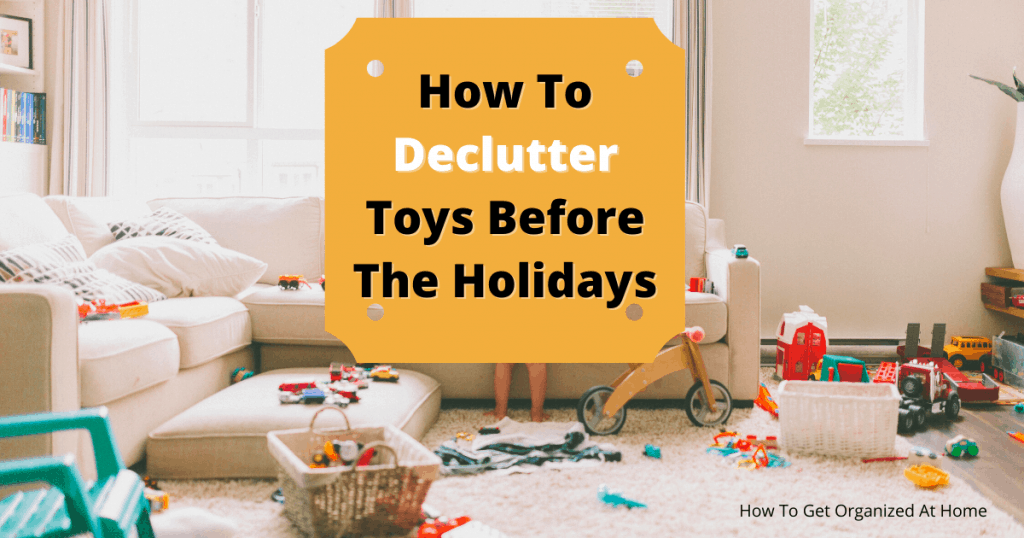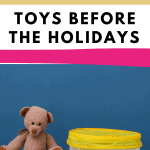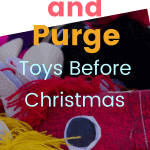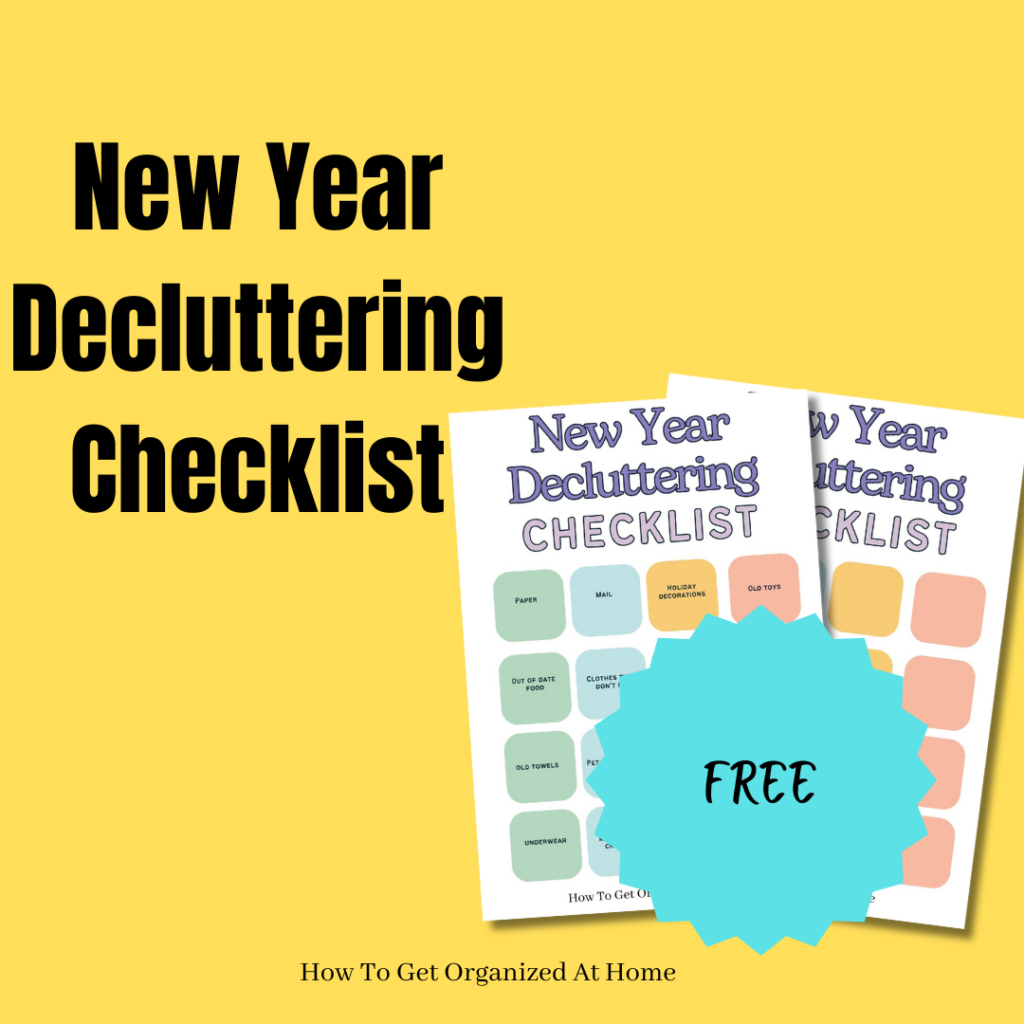How To Declutter Toys Before Christmas?
I’m often asked how do I declutter toys? Do I have my children present, should I do it when they are at school? What do I do with the toys I want to get rid of? These are all important questions when you are learning to purge your house

I feel the pain, I’ve been there, I’ve 3 children, who are grown up now, but we had to deal with toys.
If you want to have a home that isn’t drowning in toys you have to take the time to declutter, and there’s no better time than before Christmas.
Where Do I Start?
This is a simple question to answer, one toy at a time, one toy box at a time.
It really is that simple.
You need to go through all the toys and answer 3 little questions.
- Is it broken?
- Do they love it?
- Does it have sentimental value?
What Do You Do?
Some people suggest going through everything in one sitting, this is impossible if you are doing this with your children.
They will get bored and it can end in a total disaster.
I always started small, one toy box at a time. This is why I started before the holiday season so I could get through them all before the holiday.
Do You Declutter With The Child?
There are lots of different opinions and I think it must be based on your own thoughts and feelings.
Obviously, if the child is too young to make those choices then it’s up to you as a parent to declutter without them.
However, the older they get, for me personally I wanted them involved in the process as it helps them to understand the importance of getting rid of their possessions and not hoarding items.
Affiliate links are included for your convenience. (This means if you purchase after clicking a link I will earn a small commission which won’t cost you a penny more!) Click here to read my full disclosure and privacy policy.
How Do I Declutter Toys?
Let’s recap a bit here, you need to ask your child or make the decision for them as to whether the item is broken?
This is the most important question; it fuels the rest of the conversation as to what to do with that item.
Sometimes, no matter how broken something is, it might be special to them. Broken doesn’t necessarily mean that it needs to go into the bin.
If it’s dangerous, then that’s a different matter, that’s a decision for you as a parent to make.
But they have to have a reason for why they want to keep that item and you do need to put a limit on the sentimental and broken items they may keep.
I had a small box that is labeled for each child that any broken toys that had sentimental value had to fit into. If there was too much stuff something had to go.
What To Do With Broken Toys That Are For The Bin?
It can feel wasteful and sometimes un-environmentally friendly to just throw broken toys in the bin.
So, what can you do with them now and in the future?
- Can they be recycled?
- Is it possible to repair them?
- In future, could you not buy the cheap toys that easily break?
If you have a lot on, simply putting them in the bin will save your sanity.
What Do I Do With The Toys That Aren’t Broken But Not Wanted?
It can be heart breaking to parents and family members who buy toys and the child doesn’t fall in love with them.
If they are in good condition you can do two things with them:
- Give them away to a friend or a charity shop
- Sell them
Just because your child didn’t fall in love with them doesn’t mean other children won’t either.
Charity shops or other places where they will take the toys are able to sell them to make money for the charity and it’s a lot less than if they were new.
Sometimes, this is the only way a parent can afford to buy toys for their children.

How To Sell Toys
If you have the time, there are loads of places that you can try selling items.
The most popular place at the moment which is free is Facebook, there is normally a Facebook group near you with a selling page.
Pop them on their and see if they sell. Just be careful when potential buyers come to your home.
Use this money to buy new toys for Christmas, it will save you having to budget for money for presents.
Organize The Toys You Have Left
Remember, when it comes to toys, less is so much more.
They don’t get overwhelmed with what they have, and they can play with those toys and have fun.
Start with putting the toys into categories.
- Lego
- Dolls
- Dress up
- Electronic
- Motor vehicles
This enables you to see what is there, I still would just work with one toy box at a time.
If you split up the categories and find they still have too many items, consider doing a rotation where you remove a selection of toys and just swap them out every month or so.
How To Actually Organize
Now it depends on your personality and that of your child how organized you make the toys look.
You can break them down into smaller categories, like cars, buses, lorries, or you can put them into a bigger category like motor vehicles.
You don’t want to spend hours sorting them into smaller categories to find that you child has no interest in sorting like this and you then spend hours a day reorganizing toys because they’ve been put back in the wrong place.
Don’t forget to label the toy boxes, if your child can’t read use pictures to label the boxes, this way they can still find the right toy box for their toys.
Is This A Once And Done Process?
As with any decluttering, this is going to be an on-going process and the more you involve your children the easier it’s going to get.
If they understand the process and the importance of decluttering items they hopefully won’t move into adulthood with a fear of decluttering and end up hoarding items.
Buying More Toys
When it comes to buying more toys for Christmas and other holiday’s talk about what they have and what they want, not just with the child but with other people who buy gifts.
If you have too many toys, chances of them not being played with are high and this is a waste of money for everyone involved.
Let’s Recap…
Sort out the broken items first, these then have to be delt with first.
Second sort out the toys that are no longer required, are you going to sell or donate these toys?
The ones that are being kept, how are you going to organize them?
Remember, this is an on-going process and something you should be doing at least twice a year.





